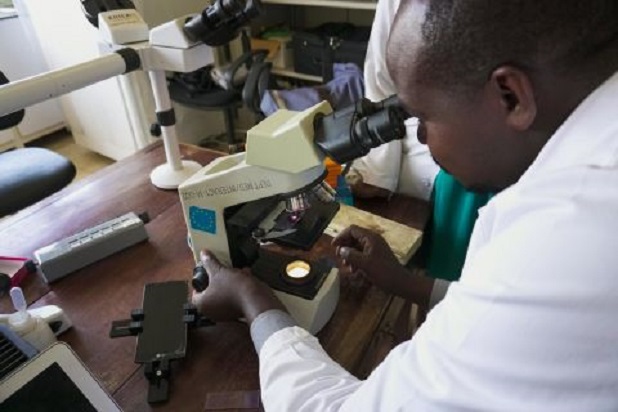A medical officer carrying out tests/Courtesy photo
Experts have warned that clinicians could be offering the wrong diagnosis to patients amidst high rates of unexplained bacterial and viral infections that seem not to heal easily.
Dr Hakim Sendagire, a Biochemist based at Makerere University Microbiology lab says lately they have been rejecting quite a number of samples sent to them for Complete Blood Count (CBC) tests due to the fact that they are contaminated and therefore cannot offer an accurate diagnosis.
A CBC test is done to check a person’s overall health and detect a number of disorders including anaemia, worms, allergies, and viral and bacterial infections. But Sendagire says a clinician picking this sample needs to pick the right volume and be very attentive not to destruct the blood cells a process scientifically called hemolysis.
If this contamination happens and goes undetected, the results of the checkup will be wrong leading to unnecessary and wrong treatment options.
Dr Erasmus Okello, an anesthesiologist-intensivist at Mulago National Referral Hospital says with a lot of cough and flu circulating, everyone showing up at a health facility with a sore throat is getting an antibiotic without a proper diagnosis, yet doctors need to spend some time with the patients in order to know when it’s appropriate to do certain tests.
He adds that while in training, doctors were urged to spend at least 30 minutes with their patients but this is impossible now with pressure from hospital bosses to quickly clear long patient queues. With such an environment, Okello says health workers are resorting to improvising than understanding their patients and samples to see if there is any contamination or anything that makes the blood results suspicious.
Sendagire says they receive about five patients with upper respiratory tract infections, eight urinary tract infections and sixty bloodstream infections daily and when further tests are done, there’s 100 per cent resistance to common antibiotic septrin. Amoxycillin and ceftriaxone which are also preferred for prescription by many doctors are being seen to have 80 per cent and 70 per cent resistance.
According to Dr Jonathan Mayito, an expert working with Fleming Fund, a UK-Aid funded project that gathers and shares antimicrobial resistance data across countries, what is happening at the Mulago hospital-based lab is not very different from what is happening elsewhere across Uganda.
He says they conducted an analysis and found 80 per cent of clinicians to be just prescribing medicines without proper diagnoses which breed resistance to common medicines such as amoxicillin and septrin.
For him, to beat these unexplained infections that are recurring, health workers need to go back to the old school form of diagnosis and spend more time with patients even as there’s a lot of automation in testing.
In their data tracking, he says, they measure how much of the antibiotics are prescribed by doctors after a proper test and that they found just less than 50 per cent of health workers do this.
-URN






